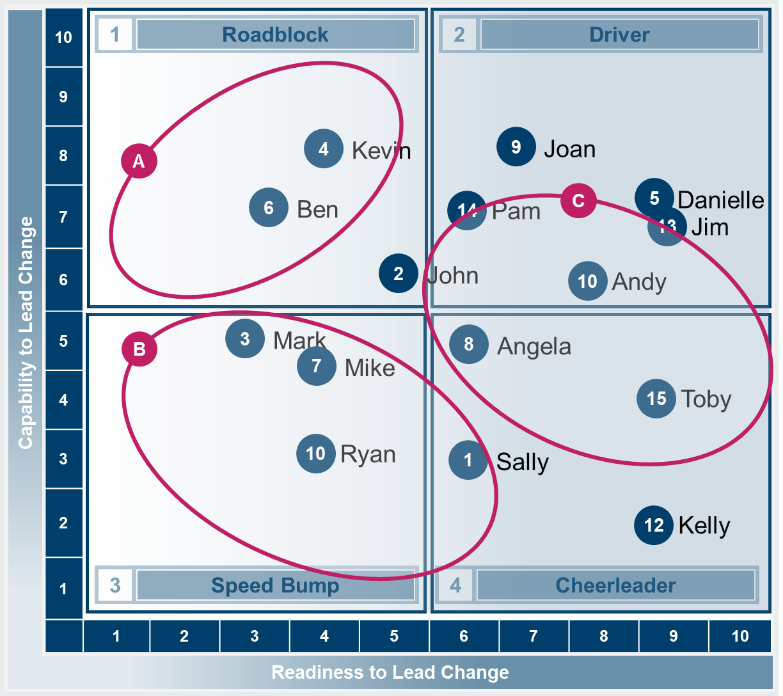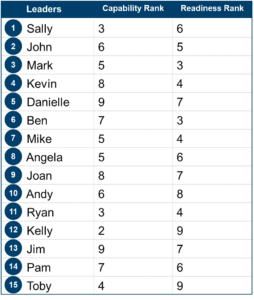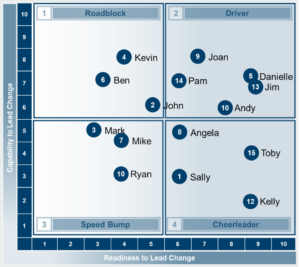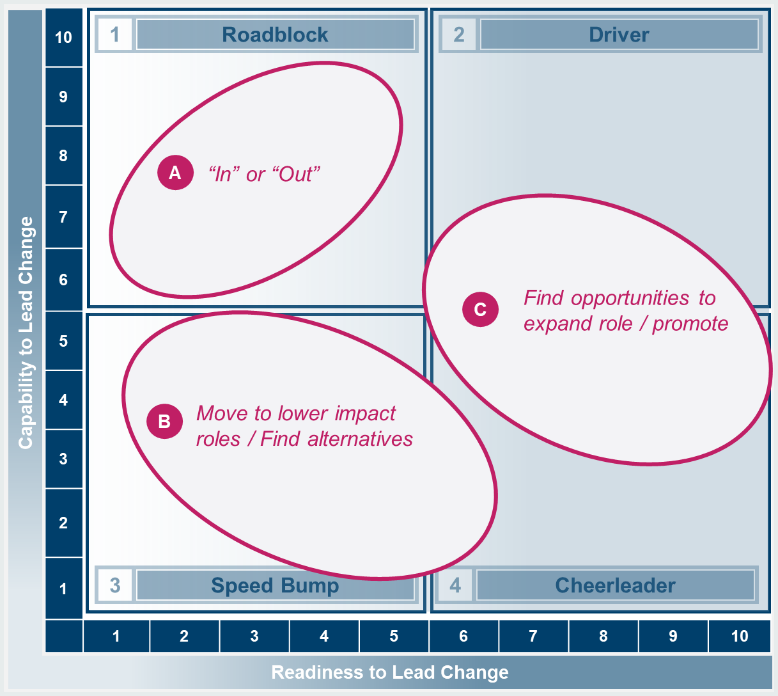Your leadership team is the driving force of any change you want to bring to your organization. We tend to underestimate the number of changes that will happen to our leadership team when we begin a transformation journey. When it comes to starting on major change I often see over half the leadership team turnover during the next two to three years.
So, if we know that there are going to be changes, how can we take a proactive view of getting the right people in the right seat? This is the first step towards building the team you need to be successful.
Assessing the Team – Bringing Realism
Let’s start by understanding that assessing your team requires a degree of art and, where possible, can involve getting more than one perspective.
That said, it is only when we assess with a level of realism that we can begin to take the appropriate actions. Underestimating and overestimating both lead to problematic outcomes – either that we underestimate or overestimate the depth and breadth of changes that are required. This is where the Team Assessor comes into play.
The Team Assessor evaluates your change team on two dimensions:
- Capability to Lead Change – each change is different, so the capabilities required to lead change are specific to the change in front of you and the organization. To what extent does each member of your leadership team have the capabilities needed to drive this change?
- Readiness to Lead Change – how much passion and desire does each member of your team have to drive this change?
A number of factors should go into your assessment of your leadership team’s capability and readiness to lead the change, including:
- Need for industry or domain expertise
- Degree of change in skill set from current mode of operations
- Career stage of each team member
- Experience and results of each team member driving change
By assigning a rank between 1 and 10, where 1 is the lowest and 10 is the highest, for each person’s capability and readiness for change, then plotting each person’s position on the table, you will have a clear view in which you can assess your team.
example:
On the Capability to Lead Change dimension, those with the highest capability should be placed on the upper half of the table, those with the lowest capability should be placed on the lower half of the table. On the Readiness to Lead Change dimension, those with the highest readiness should be on the right side of the table, those with the lowest readiness should be on the left side of the table.
Do the relative placements (each leadership member relative to each other) make sense?
Did the results come out as you expected?
Defining Actions
The assessment places members of the leadership team into four quadrants:
- Roadblock – high capability and low readiness to change. In many cases these people possess a low readiness to change because they are not passionate about the direction that you are laying out. These are effective, capable change leaders, so if they are not aligned with your direction you must recognize their resistance and invest time to engage in open dialogue to bring them on board. If that does not work, and you find these individuals have still not bought in, then they are likely to slow your ability to drive change. Is there another team in the organization where they would be a better fit?
- Driver – high capability and high readiness to change. These people are likely to be the most critical leaders in the change ahead. However, because they are very effective change leaders you will need to continuously bring new challenges and recognition, or they will be more likely to leave.
- Speed Bump – low capability and low readiness to change. These team members will not significantly slow change, but they will not help either. This is due to their low capability to drive change, which means they are unlikely to engage and lead others to prevent the change from happening. What they are doing is using up a leadership team spot that could be used on a more effective leader.
- Cheerleader – low capability and high readiness to change. These are great people to have on your team as long as they are not leading the most important parts of the change. While these people will be strong proponents of change and will keep their teams engaged in the overall effort, they are unlikely to deliver significant change results by themselves.
As stated above, this assessment requires a degree of art. As a result, some team members will be placed closer to the edges of the “Driver” box (team members who both have the capability and readiness to lead the change). Where there is proximity I have found that the best course of action is to assume that they can be “Drivers” and give them an appropriate assignment to test your assumption. Some of the best change leaders I have seen just needed that opportunity to prove themselves.
From here determine which actions you are going to take and how you want to sequence them:
- “In or Out” – Those firmly in the Roadblock quadrant will either help or hurt your ability to drive the change in front of you. Having an action plan along with clear dates will ensure that there is no “drift” in this area.
- “Find Alternatives” – People placed within this radius may be better suited in other parts of the organization or in areas with a lower need for change. As they have both a low capability and readiness to lead change they are taking a position that an effective leader could take on. A clear action plan to move them to alternative positions and executing that action plan will highlight to the rest of the team that the change has started.
- “Opportunities to Expand Role / Promote” – These people are potential Drivers who just need the opportunity to show what they can do to effectively drive change. Where can their skills be most effectively be deployed?

Getting Started
Inflicting change on your team all at once can create significant turmoil in any organization. The Team Assessor tool can be an effective action if the change required is radical, but there is always the risk that there will be a gap in getting started in the change where there are open leadership positions.
We tend to overestimate what we can get done in a short period of time and underestimate what we can get done in a longer period of time. Having the right people in the right seats with a clear action plan will ensure you’re working with a team who is passionate, dedicated, and committed to successfully driving your change efforts.
Download a copy of the Team Assessor Tool
[pdf-embedder url=”http://concentregroup.com/wp-content/uploads/2018/06/Team-Assessor-Tool-Download-from-Concentre-1.pdf” title=”Team Assessor Tool Download from Concentre” download=”on” width=”200″]







